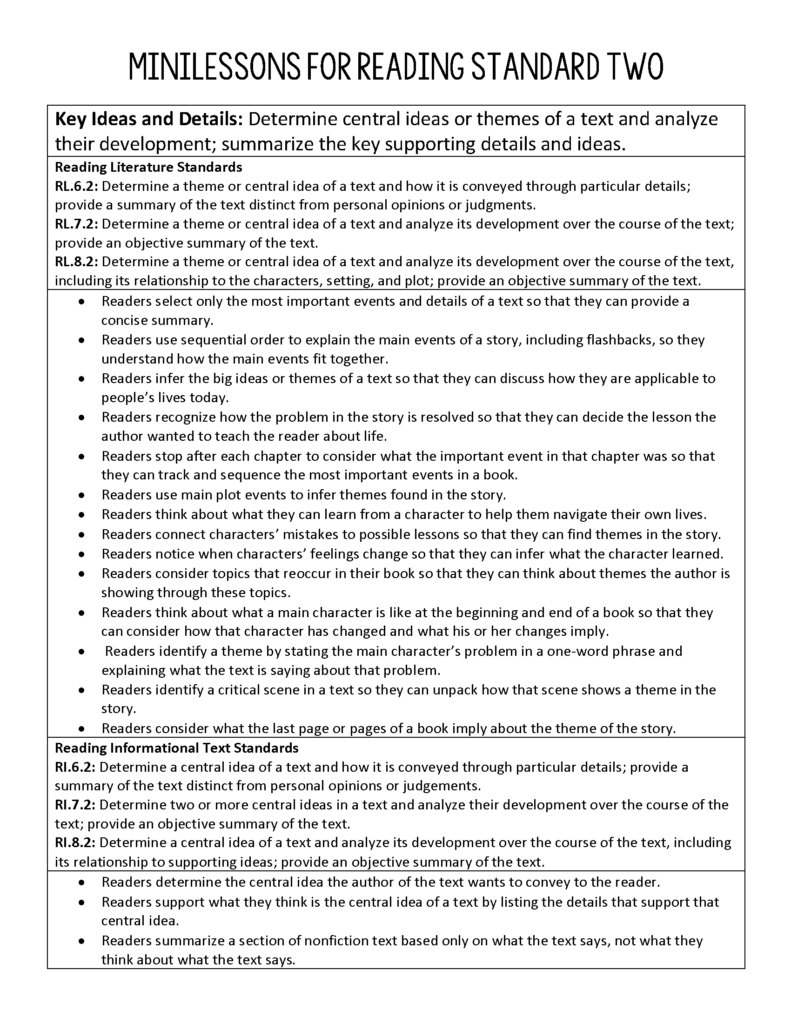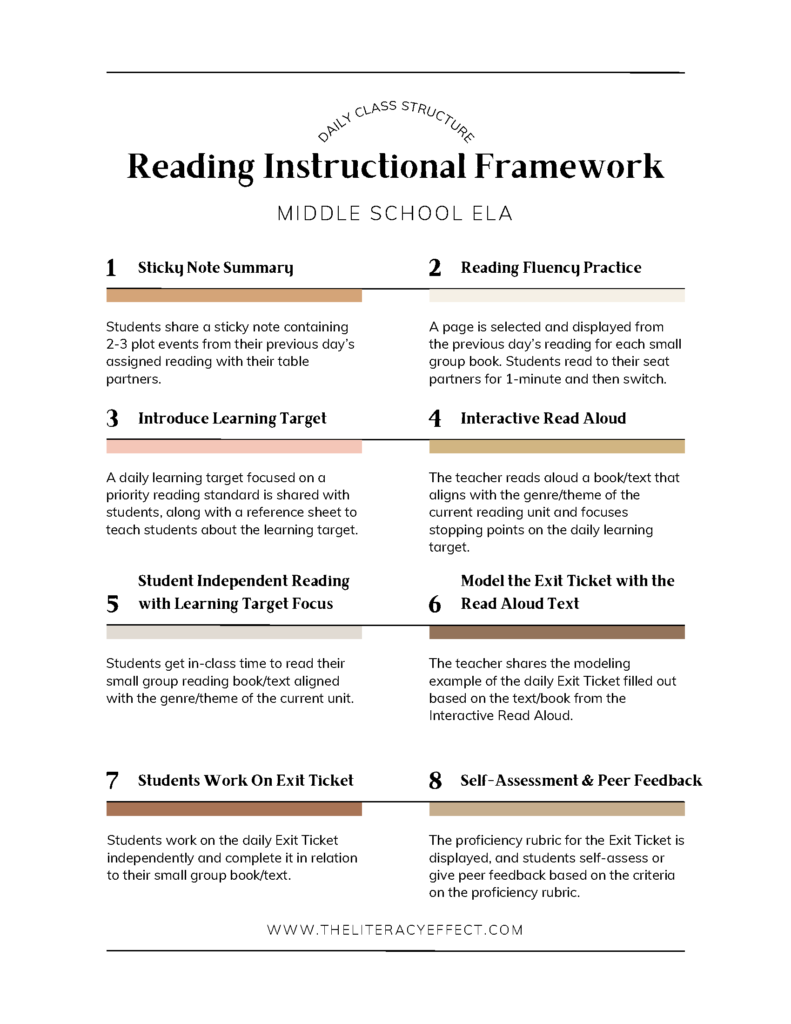We have seen all the templates and heard all of the buzz words: essential question, unit understanding, priority standards, formative assessments, summative assessments, etc. We have probably spent more time than we care to calculate fitting our teaching lesson plans into district-mandated unit plan templates. We simply complete the unit plan templates because it is a checklist item that we need to get done in order for our curriculum to be district approved. What is often not factored in about these templates, however, is that teachers don’t look back at them, teachers don’t use them, and teachers don’t update them. If curriculum is supposed to be this thing that is always changing and evolving, then shouldn’t our teaching unit plans allow this?
My vote is we’ve made it entirely too complicated. In today’s blog post, I’m going to share a teaching unit plan template with you that involves nothing more than a Google Doc and hyperlinks. I’ve tried many different unit plan templates in my teaching career, and I can say with complete confidence this is the only one that has ever stuck. This is the only one I see teams of teachers bringing up at every collaboration meeting and continuously updating year after year to reflect what is currently being done in the classroom. Let’s dig in, so I can explain this process to you.
Step One: Choose Your Priority Standards
For the purpose of this example, I am going to use reading. My district went through the process of studying our state standards, which are based on the Common Core Reading Standards, to select our priority reading standards. These are the standards we assess throughout each reading unit. We also simplified the language of the standard to make it more teacher, parent, and student-friendly. This is a big process, but once we had our priority standards selected for reading, writing, language, and speaking/listening, we were able to focus our instruction for reading units and writing units. I recommend around 5-7 priority reading standards for reading and 5-7 for writing for each grade level. Different grade levels can absolutely pick the same priority reading standards. Based on the standard for each grade level, the wording of the priority standard could be slightly different. Below is an example of the priority standard we used for 8th Grade ELA this school year.

Step Two: Align Daily Learning Targets to Priority Standards
Now that you have your priority standards selected, it’s time to decide what daily learning targets fit with each priority standard. A daily learning target should be a much smaller chunk than an entire priority standard. Here are the two rules of daily learning targets:
1. Students should have a new daily learning target each day.
2. Daily learning targets should be aligned to a priority standard.
Below is an example of how I took a priority reading standard and wrote daily learning targets aligned to the reading standard. I’ve actually done this for every single reading literature and reading informational standard from The Common Core State Standards. This resource is included in my Reading Workshop Minilessons Guide linked here.


Step Three: Create a Sequence of Daily Learning Targets to Build a Unit
Now that you have your priority standards and daily learning targets aligned to your priority standards, it’s time to sequence a series of daily learning targets to create a unit. For reading, I usually aim for 15-20 daily learning targets to make up a unit. As I’m selecting the daily learning targets, I consider the texts I’m reading to students and/or students are reading to themselves across the unit and a learning sequence that flows and makes sense. Here is an example of the end result that I wrote for a reading unit based on the genre of Narrative Nonfiction.

Step Four: Build Out Your Daily Resources
Now that you know the sequence of daily lessons you will do across a particular unit, it’s time to build out your lessons by creating the materials you need to teach them. For reading, I recommend using a daily reading teaching framework so that you don’t feel like you have to re-invent the wheel every day with a new student activity. Students thrive on a consistent daily routine, and this helps immensely for daily planning. Read all about the daily reading teaching framework here. So what daily resources do you need? For me, I like to have a daily Google Slides presentation to guide me through the different pieces of the reading instructional framework. I also create a daily formative assessment that students complete in relation to their reading.

Step Five: Create a Student Unit Plan
I like to give students a unit plan at the beginning of every reading unit or writing unit to show them what our game plan for the next couple of weeks will be. The student unit plan contains the dates for each lesson, what priority reading standard each daily learning target is aligned to, what daily formative assessments will be on the summative assessment, and what date our summative assessment for the unit will be. I also include dates of any interruptions to our daily schedule to help keep myself and students organized. An example Student Unit Plan from our Narrative Nonfiction Reading Unit is shown below.

Step Six: Create a Teacher Unit Plan
You’re finally to the point of why you’re reading this blog post in the first place. I felt like it was necessary to walk you through how I get to the point of having a teacher unit plan. It’s not something that can be created in a day. It’s something that involved pulling together a lot of thought and teaching resources over time. If you have great collaborative teams at your school, this is a process you could go through together to create units.
I realize that for many, this process is not a reality because of time constraints or perhaps your district has a required curriculum resource you must teach from. It’s important to note that I still recommend going through this process to create a student view and teacher view unit plan because it is helpful in understanding your curriculum resource and being organized in accessing the correct pieces of it for daily instruction.
If time constraints are the hurdle, but you love the idea of this process, I do have reading units and writing units written specifically for 6-8 middle school students available in my TPT store. This is the process I went through for each of the. Each unit was thoughtfully crafted together and was extremely time intensive. I worked on the reading units and writing units for years and continue to add more bonus units and revise current units.
-Fiction Middle School Reading Units: Realistic Fiction, Historical Fiction, Science Fiction/Fantasy, Myth & Fairy Tale Inspired Fiction
-Nonfiction Middle School Reading Units: Expository Nonfiction (Short Articles), Narrative Nonfiction, Memoir/Biography
-Persuasive Middle School Writing Units: Product Review, Book Recommendation, Important Issue Letter
-Informative/Explanatory Middle School Writing Units: Blog Post, Literary Analysis, Quote to Live By
-Narrative Middle School Writing Units: Memoir Vignettes, Deleted Scene, Narrative Nonfiction, Children’s Book
-Research Middle School Writing Units: Ask Anything Research
Below is an example of the Teacher Unit Plan that I used to teach the Narrative Nonfiction Reading Units this year. This entire document is a Google Doc with hyperlinks to the resources needed for the unit and daily teaching materials. It starts out with a unit understanding and essential questions. This is something that’s required in the district I teach in. The unit plan also includes hyperlinks to the student unit plan, resource folder, and book rotations students went through for this particular unit. Each day includes that date we plan to teach the daily reading lesson, hyperlinks to the resources needed for that particular lesson (Google Slides, formative assessment/Exit Ticket, modeling examples, reference sheets, etc.), the IXL skill we’re using for Word Study for the day, and our Interactive Read Aloud plan.
We also factor in dates when our schedule is interrupted and put that into the teacher view to keep us organized. For us, this included district screeners, library days, field trips, teacher in-service, vacation days, etc. The last day of a reading unit is always the summative assessment, and we link the summative assessment right into the unit plan. At the bottom of the unit plan for a reading unit, we include the texts we’re going to use for interactive read aloud and the texts students are going to read on their own.
In our middle school, we get together to collaborate as a grade level ELA team 2-3 times a week for 40-45 minutes each time. Each of us has the “Teacher View Unit Plan” for whatever unit we’re currently teaching pulled up on our laptops, and we’re able to truly work collaboratively. We’re all able to access the same document, we’re all able to modify lessons and assessments and work together to have the unit plan reflect our most current teaching practices. The first thing we do the following school year when we’re gearing up to teach this unit again is bring up this document, update the “Date to Teach” column and start the process of using what we already have/modifying items we wanted to change as we teach it again.




I highly recommend this process whether you are individually or collaboratively responsible for the curriculum you provide to your students. It helps to keep your curriculum current and organized. It’s so perfect for sharing with new teaching staff so that they have access to all the curriculum materials and it’s clearly laid out for them. It also helps teachers build curriculum year after year into something really great and user-friendly.





